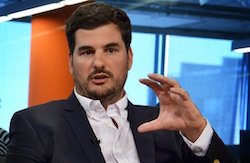A former Buenos Aires police chief has compared Argentina today with the Colombia of Pablo Escobar, a somewhat flawed analogy but a warning of the potential risks of allowing the drug trade to flourish unopposed.
In an interview with Infobae, former Buenos Aires Metropolitan Police Chief Eugenio Burzaco said Argentina’s current situation with drug trafficking is comparable to Colombia’s five years before the emergence of notorious drug lord Pablo Escobar and his Medellin Cartel. While Argentina does not yet have cartels, Burzaco stated, “we have criminal organizations, like Los Monos in Rosario.”
According to Burzaco, Argentina is at a point where drug traffickers in “the large cities are beginning to dominate physical enclaves and spread by confronting other groups.” And it is not just a question of drug transit, Burazco asserts, with local drug consumption markets “the most important” right now.
Additionally, Burzaco feels Argentina is close to a stage “characterized by the deep penetration of power structures in order to co-opt them, such as politics, the police, and justice.” According to Infobae, he recalled a conversation with a Colombian diplomat, who said Argentina is like Colombia was in the late 1970s and early 1980s: “In denial of the problem.”
InSight Crime Analysis
While an interesting comparison, Burzaco’s paralleling of Argentina and pre-Escobar Colombia is not entirely accurate.
For starters, Argentina is not a major drug producing country. And while synthetic drug production has been on the increase, this largely feeds Argentina’s domestic drug market; something Colombia had little of during Escobar’s time. Nor have Argentinian criminal groups, such as Los Monos, demonstrated a capacity for industrializing the drug trade or exporting multi-ton drug shipments like Colombia’s Medellin or Cali Cartels. Instead, these groups focus on microtrafficking and locally-focused crimes such as extortion or kidnapping.
SEE ALSO: Coverage of Argentina
Nonetheless, this is not to say Argentina will not suffer the epidemic levels of violence of Colombia during the time of Escobar. Indeed, as Burzaco suggests, Argentina is in a delicate position, with organized crime and drug trafficking becoming increasingly prevalent in the country.
For instance, in addition to the rise of local criminal groups, evidence shows foreign criminal networks are moving into Argentina, using it as a drug transshipment point and market — and in some case a place to live. The presence of these transnational criminal networks has contributed to an increase in violence, as competing groups battle for control.
Unfortunately, given these trends, and the slow government response in confronting the problem, events such as the recent killing of three Paraguayan nationals in Argentina — which authorities believe was a “settling of accounts” among drug traffickers — could become more common.

